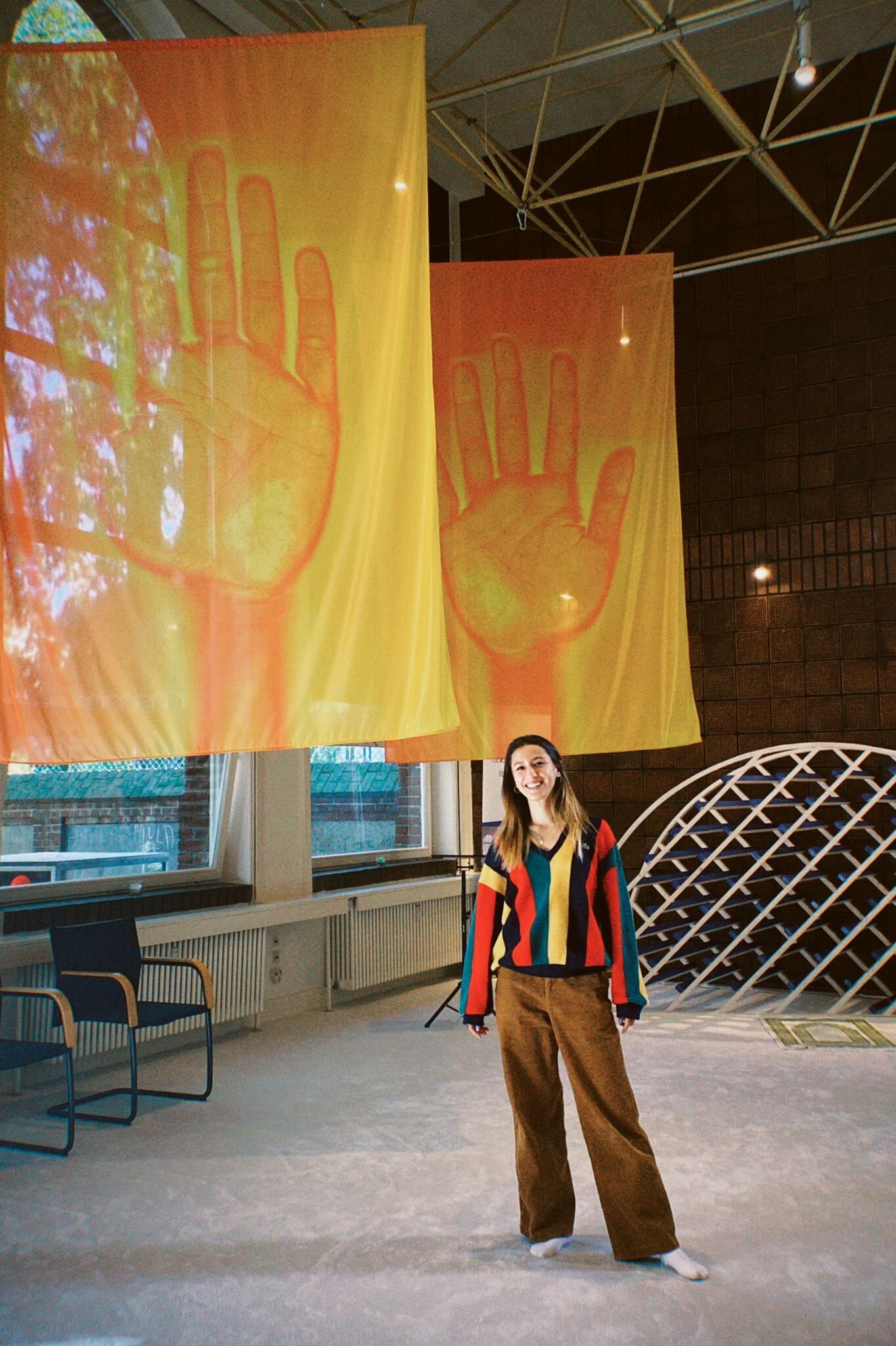Holy Hands
Under the title "Holy Hands", the works of the artist Silke Lapina were presented during the Friday prayer on October 8th, 2021, at the Ibn Rushd-Goethe Mosque in Berlin Moabit. Hands as a symbol of closeness and connection have been at the center of most cultures to this day. Inspired by Jewish, Christian, and Muslim mysticism, the artist Silke Lapina's works mainly revolve around the themes of perception, touch, and connectivity.
Unter dem Titel „Holy Hands“ wurden beim Freitagsgebet am 08.10.2021 in der Ibn Rushd – Goethe Moschee in Berlin Moabit, die Werke der Künstlerin Silke Lapina präsentiert. Die Hände als ein Zeichen der Annäherung stehen bis heute im Mittelpunkt der meisten Kulturen. Inspiriert von der jüdischen, christlichen und muslimischen Mystik spielen in den Werken der Künstlerin Silke Lapina vor allem die Themen Wahrnehmung, Berührung und Verbundenheit eine zentrale Rolle.
Text by Paula Dengs 2021
"Holy Hands" by Silke Lapina
Under the title "Holy Hands", the works of the artist Silke Lapina were presented during the Friday prayer on October 8th, 2021, at the Ibn Rushd-Goethe Mosque in Berlin Moabit. Hands as a symbol of closeness and connection have been at the center of most cultures to this day. Inspired by Jewish, Christian, and Muslim mysticism, the artist Silke Lapina's works mainly revolve around the themes of perception, touch, and connectivity. The symbol of the hand is accessible to everyone and creates a sense of connection. We live in a society that emphasizes boundaries, which are generally accepted and lived by. In a world that seems to have forgotten how to feel, people shake hands professionally and distantly. All too often, this happens in a detached and uninterested manner, with empty eyes and exhaustion. The artist aims to counteract this lack of connection, especially in the isolation of big cities, by using the mosque as an exhibition space.
"I see the Ibn Rushd-Goethe Mosque primarily as a place of encounter and openness. It is a mosque, but the Friday prayer and the subsequent discussion round are accessible to everyone, regardless of whether they are atheist or belong to another religion. A dialogue of different worldviews is not only preached here but also lived. Moreover, something moved me in the mosque for which I have no words - that is what my art is for."
The progressive and liberal Ibn Rushd-Goethe Mosque, which opened in 2017, creates a space for a respectful culture of encounter that aims to bring people together. Co-founder and imam Seyran Ates is a women's rights activist. Unlike the majority of other mosques, women and men pray in joint rows, sermons are also held by women, wearing headscarves is optional, and the LGBTQ+ community is welcome. The theological orientation of the IRG Mosque is based on a humanistic, critically historical interpretation of the Quran, which inspired the artist Silke Lapina in her works. In a societal context where political polarization is increasing, it is necessary to have projects that protect and support spaces of connection and encounter.
Text by Paula Dengs 2021
"Holy Hands" von Silke Lapina
Unter dem Titel „Holy Hands“ wurden beim Freitagsgebet am 08.10.2021 in der Ibn Rushd – Goethe Moschee in Berlin Moabit, die Werke der Künstlerin Silke Lapina präsentiert. Die Hände als ein Zeichen der Annäherung stehen bis heute im Mittelpunkt der meisten Kulturen. Inspiriert von der jüdischen, christlichen und muslimischen Mystik spielen in den Werken der Künstlerin Silke Lapina vor allem die Themen Wahrnehmung, Berührung und Verbundenheit eine zentrale Rolle. Das Symbol der Hand ist für jeden zugänglich und schafft Verbundenheit. Wir leben in einer Gesellschaft der Abgrenzung die allgemein akzeptiert und gelebt wird. In einer Welt, die das Fühlen verlernt zu haben scheint, reicht man sich professionell und distanziert die Hände. Allzu oft geschieht dies teilnahmslos und mit leerem Blick, erschöpft und des-interessiert. Dieser fehlenden Verbundenheit, besonders in der großstädtischen Isolation, möchte die Künstlerin entgegenwirken – mit der Moschee als Ausstellungsraum:
“Ich sehe die Ibn Rushd - Goethe Moschee vor allem als Ort der Begegnung und Offenheit. Es ist eine Moschee, jedoch ist das Freitagsgebet und die anschließende Diskussionsrunde für jeden zugänglich egal ob Atheist oder einer anderen Glaubensrichtung zugehörig. Ein Dialog verschiedener Weltbilder wird hier nicht nur gepredigt, sondern auch gelebt. Darüber hinaus hat mich in der Moschee etwas gerührt wofür ich keine Worte habe – dafür ist dann meine Kunst da.”
Die 2017 eröffnete progressive liberale Ibn Rushd - Goethe Moschee schafft Raum für eine respektvolle Begegnungskultur, die verbinden soll. Mitbegründerin und Imamin ist Frauenrechtlerin Seyran Ates. Im Unterschied zur Mehrheit anderer Moscheen, beten hier Frauen und Männer in gemeinsamen Reihen, die Predigten werden auch von Frauen gehalten, das Tragen von Kopfbedeckungen ist freiwillig und die LGBTQ+ Community ist willkommen. Die theologische Ausrichtung der IRG Moschee basiert auf einer humanistischen, kritischhistorischen Koranexegese, welche die Künstlerin Silke Lapina in ihren Werken inspiriert hat. In einem gesellschaftlichen Kontext, in dem eine politische Spaltung aktuell zunimmt, braucht es Projekte, die Räume der Verbundenheit und Begegnung schützen und unterstützen.
Text von Paula Dengs 2021

